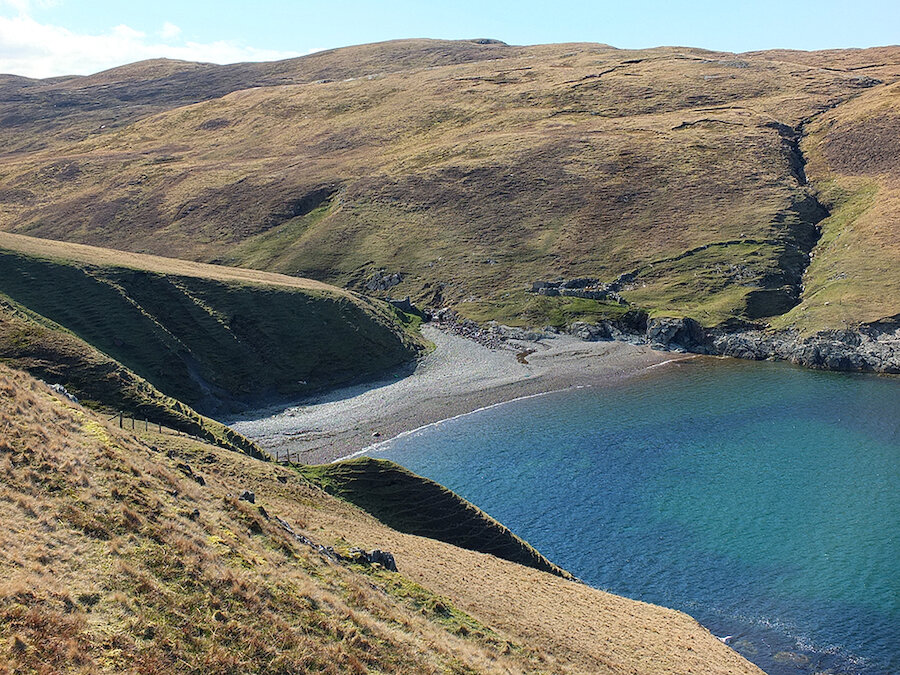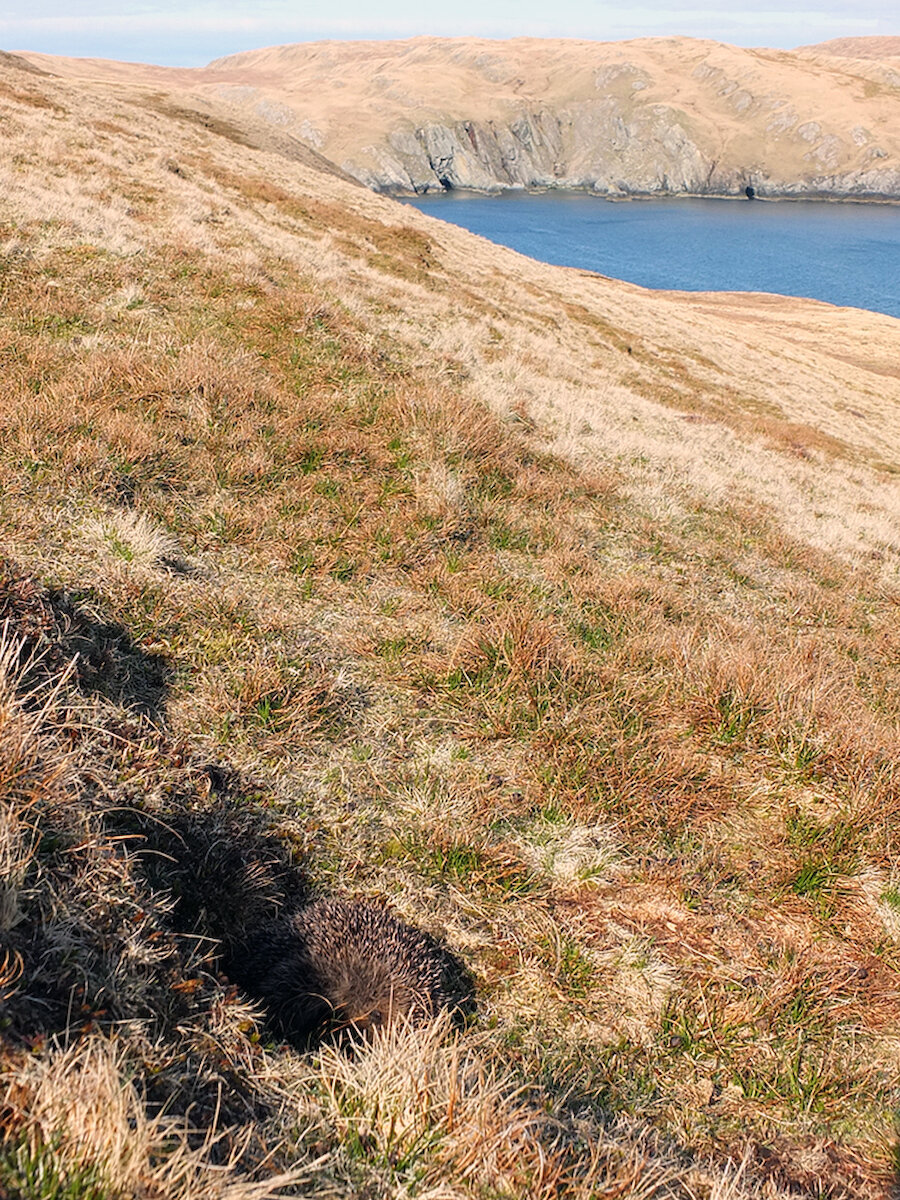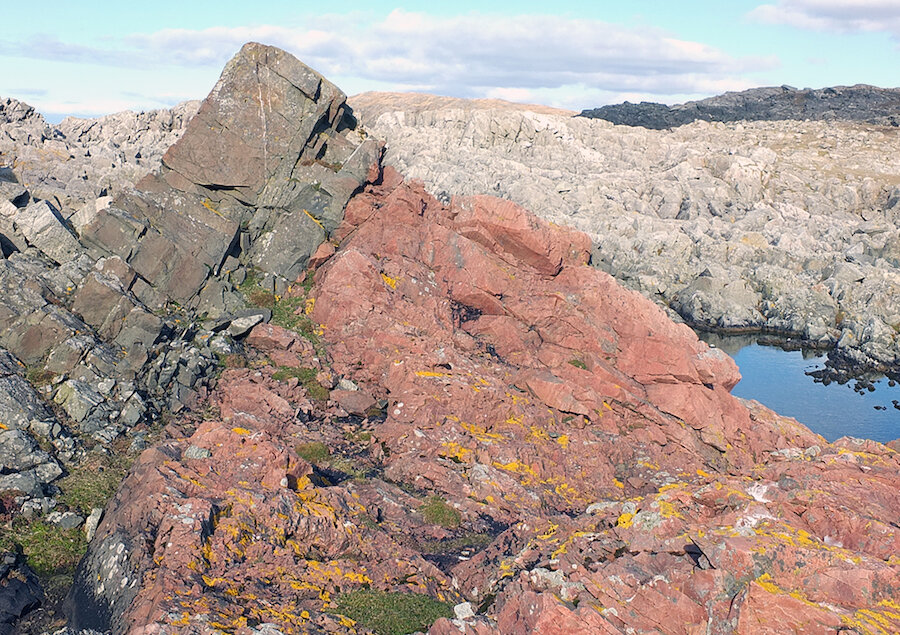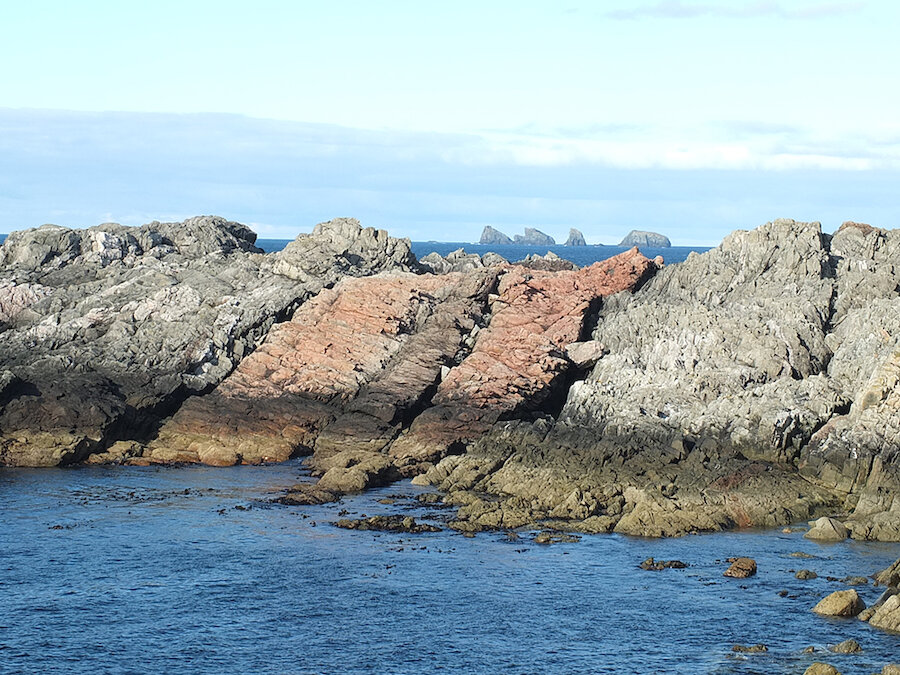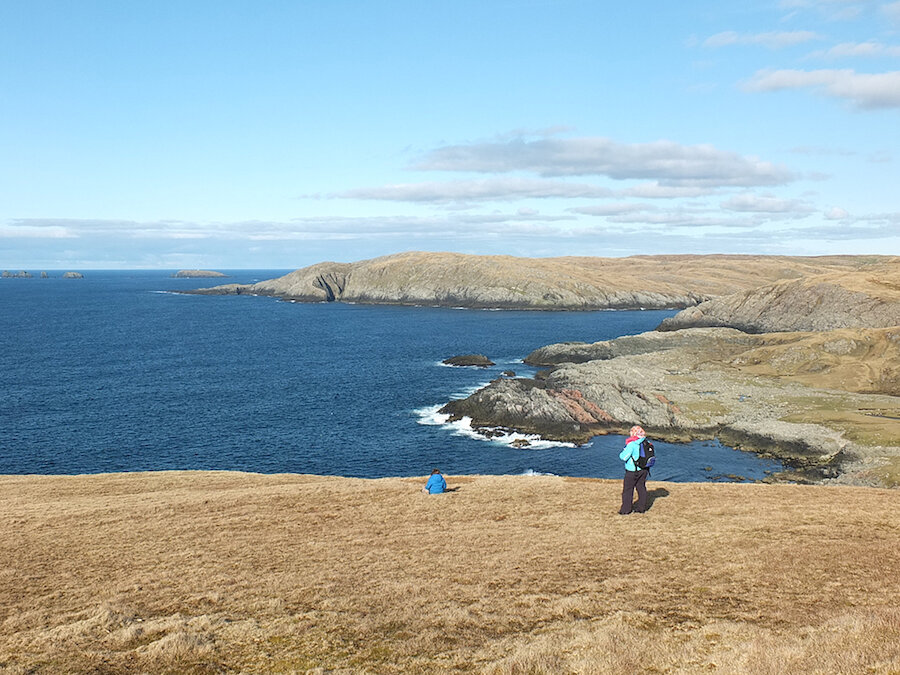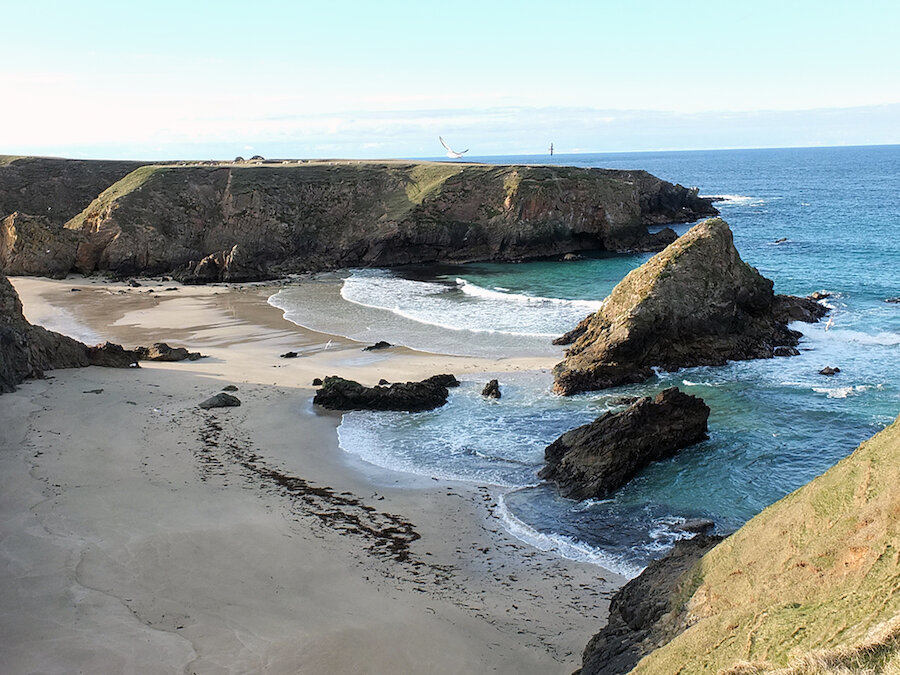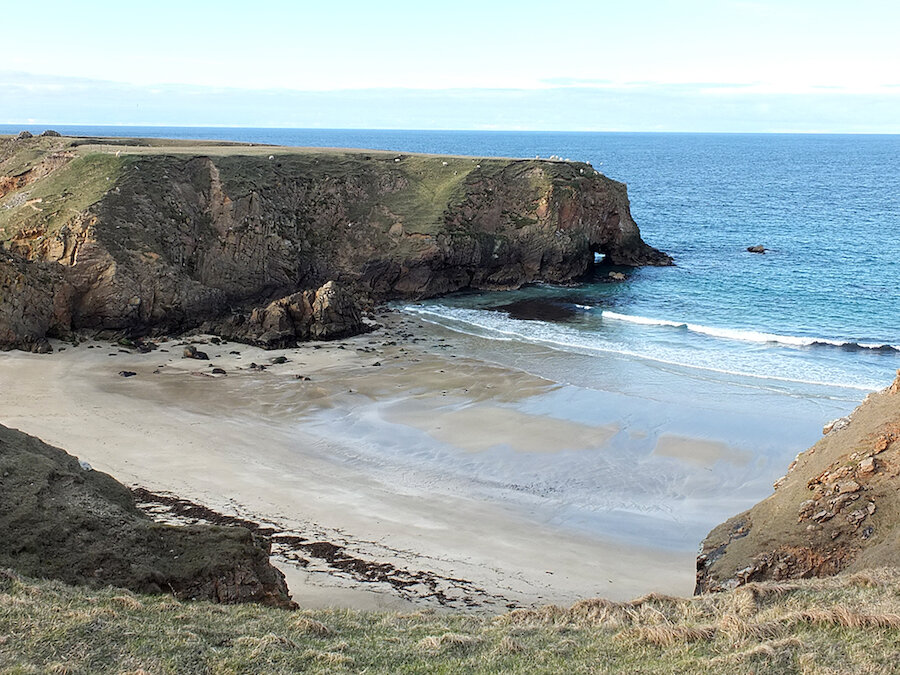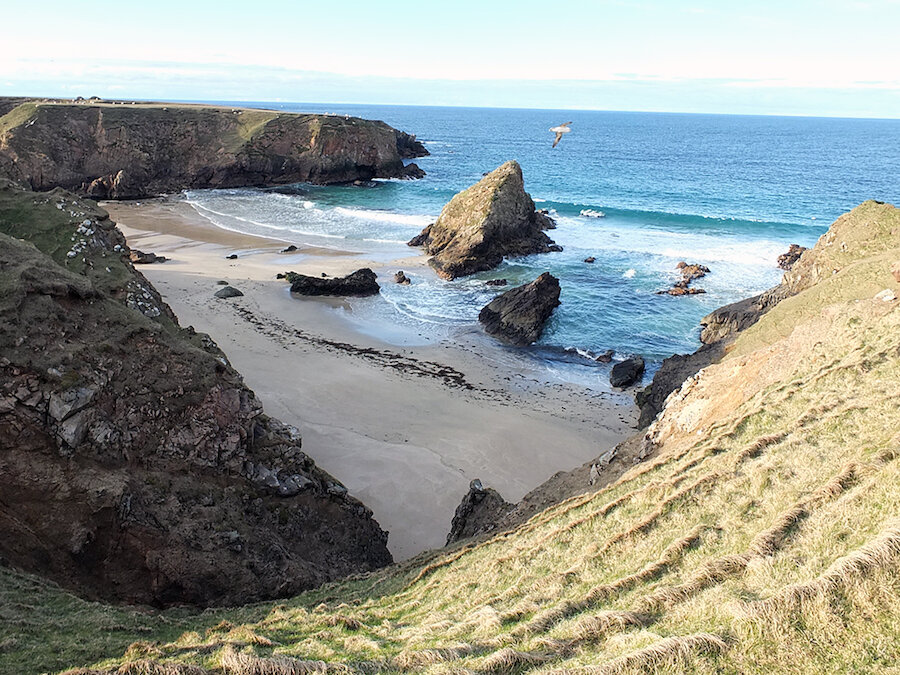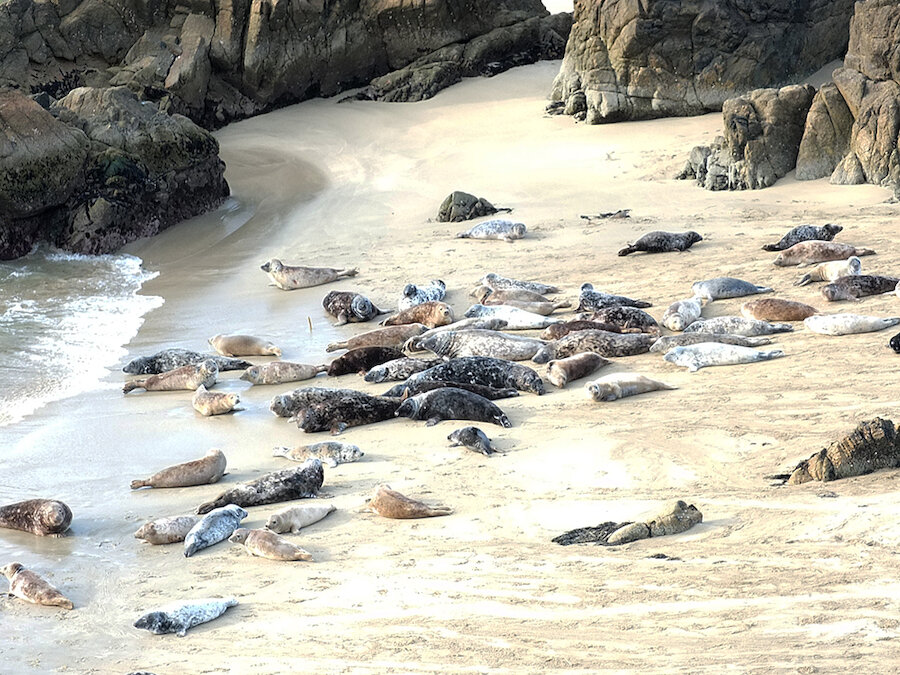On the final day of the school Easter holidays I woke early and checked the BBC weather app to see what weather we had in store for the day. As luck should have, full sun was predicted!
A day of adventuring was crying out to be had.
So, my daughter and I packed a picnic lunch, collected a friend, and we headed out to walk the Sandvoe and Uyea Circular - one of Shetland's wildest and most challenging walks.
What a day we had!
Parking the car next to the graveyard in Sandvoe, at the north west tip of the mainland of Shetland, we crossed through a sheep field, following the sign marked Access Route and scrambled along the steep coastline. We could see why the area was called Sandvoe - the shimmering white sands under the sea glistened in the sunlight - we were almost tempted to jump in for a swim.
We stopped for a bite to eat and cup of tea at Roer Mill where the ruins of an old Haaf fishing bod are still visible (pictured above).

